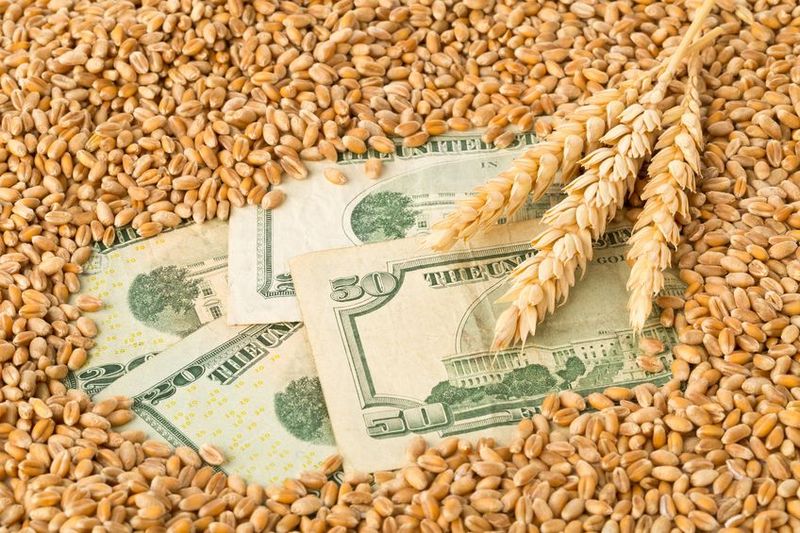Australia: Prices soften amid thin export demand

Northern markets for wheat and barley have dropped this week amid lacklustre export demand and comfortable coverage for domestic consumers.
In the south, prices moved have been mixed and moderate, with export more active by comparison.
“Markets are feeling soft, mainly due to lack of demand at the moment,” one trader said.
“China has been inactive so far in 2024, and Russian wheat is being offered aggressively into the market; globally, the market is feeling bearish.
| Feb 8 | Feb 1 | |
| Barley Downs | $383 | $398 |
| ASW wheat Downs | $388 | $395 |
| Sorghum Downs | $360 | $365 |
| Barley Melbourne | $337 | $340 |
| ASW wheat Melbourne | $365 | $362 |
Table 1: Indicative prices in Australian dollars per tonne.
Volume being traded in the northern market is very slow this week as consumers sit out on adequate coverage, and growers hold ground on the offer side.
“On barley, there’s been a $10 drop in the past week; some consumers are looking at buying, and growers don’t want to move down to that level,” one trader said.
“We’re having the Mexican stand-off.”
Some growers have considerable stocks of wheat and barley but at current price levels, are expected to hang on to what they have room to store in case the season turns dry.
“If the growers could get $5-$10 extra now, they’d get rid of it.”
Export demand for APW and H2-type wheat out of northern ports is thin, as it cannot compete on price with cargoes out of southern Australian ports which are in turn competing with Russian wheat in global markets.
“Exporters have got no appetite for wheat at all.”
Prime Hard-type wheat is in demand from containerised exporters particularly, but is in very short supply now that domestic flour mills are covered.
On the production front, sorghum crops are generally looking at an average or better yield potential as the harvest for the main Darling Downs and northern New South Wales crop nears.
Cotton is also in good stead.
“Industry sources have said the crop is getting a little bigger, mainly due to dryland crops showing excellent yield potential,” Woodside Commodities managing director Hamish Steele-Park said.
New-crop cottonseed values remain rangebound, and Mr Steele-Park said domestic buyers generally remain sidelined.
“Feedlotters are monitoring the higher cattle prices, and most are refraining from buying at the moment.
“Australian cottonseed is competitive verses other cottonseed origins on a cost-and-freight Asian destination-port basis, but export demand is intermittent.”
Mr Steele-Park said the Chinese New Year holiday is further subduing demand, with Australian new-crop cottonseed currently priced at $540/t DCT.
On an ex-gin basis, new-crop Riverina and northern NSW cottonseed is valued at $425-$430/t.
“Old-crop cottonseed is hard to shift due to lack of demand and the falling price; the price inverse between old and new crop has narrowed over the past several months.”
In the southern market, growers are selling modest amounts of feed wheat and barley into export pathways, and also to consumers.
Trade reports say barley has traded as low as $300/t on farm in southern NSW, and feed wheat around $320/t.
“Farmer selling has dropped off from last month,” Delta Ag Harden-based grain manager Graham Martin-Dye said.
“They want to see (prices) go up another $10-$15/t.”
Mr Martin-Dye said the premium for H2 wheat over ASW has narrowed.
“It’s hard to move that protein.”
Southern growers are being equally uninspired by prices for canola, which is normally being sold to exporters in considerable volume at this time of year.
Likewise, malting’s premium over feed has thinned to a sliver, and growers rather than the trade appear to be holding the long position in the hope that China returns to the market.
Following rain in recent months, much of eastern and South Australia is looking good for a strong and early start to planting come April.
Mr Martin-Dye said growers on the outer slopes and plains were waiting for new-crop prospects to consolidate before they let barley go.
“We could see a fair bit come on to the market coming into winter.”
It appears likely to sell into northern NSW and southern Qld’s feedlots once they start to cover for July-September.
At Young, Grain Focus principal Michael Jones said canola and cereals are trading sideways.
“Any rally will be met with some serious selling.”
Read also
Wheat in Southern Brazil Impacted by Dry Weather and Frosts
Oilseed Industry. Leaders and Strategies in the Times of a Great Change
Black Sea & Danube Region: Oilseed and Vegoil Markets Within Ongoing Transfor...
Serbia. The drought will cause extremely high losses for farmers this year
2023/24 Safrinha Corn in Brazil 91% Harvested
Write to us
Our manager will contact you soon



